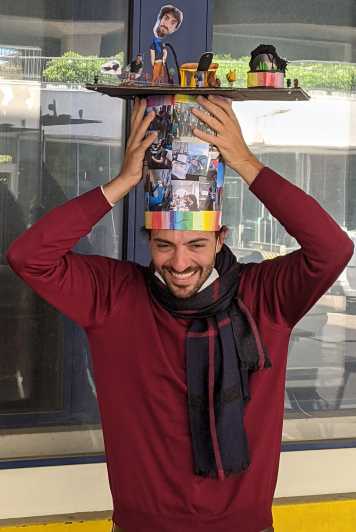Congratulations to Dr. Nicola Nuti on passing his PhD defense!
A Microfluidic Approach To Cell-Free Membrane Protein Synthesis

Congratulations Nicola Nuti! Best of luck in the future!
The doctoral committee was organised as follows:
Committee Chair: Prof. Dr. Barbara Treutlein, ETH Zürich
Supervisor: Prof. Dr. Petra S. Dittrich, ETH Zürich
Referee 1: Prof. Dr. Sven Panke, ETH Zürich
Referee 2: Prof. Dr. Peter J. Walde, ETH Zürich
“A microfluidic approach to cell-free membrane protein synthesis”
Abstract:
Droplet microfluidics is the science and technology of systems manipulating immiscible fluids at the micrometre scale. Through a wide array of devices and technologies, a stream of nano to picolitre sized water droplets is generated in an inert oil at a very high frequency. In a few minutes, a single device can generate hundreds of thousands of independent, ultra-small, monodisperse droplets. These droplets can act as single individual microreactors that can be manipulated in a variety of ways. A significant drawback of water-in-oil (w/o) droplets is their limited stability to evaporation and their fundamental incompatibility with commercially available devices that handle cells in aqueous media. A way to overcome such limitations is to add an extra step in the emulsification procedure, generating water-in-oil-in-water (w/o/w) double emulsions. These are composed of an inner aqueous core surrounded by a layer of oil, floating in a vast outer aqueous phase. Due to their increased stability and downstream compatibility with FACS and flow-cytometric devices, double emulsions are an excellent tool for the high-throughput screening of large libraries.
In this work, both single and double emulsions are coupled with artificial lipid models and cell-free protein synthesis systems to investigate the relationship between cell-free produced membrane-interacting proteins and the lipid bilayer they populate. By introducing cell-free extract within emulsion droplets, we can harvest the machinery for transcription and translation extracted from a bacterial cell via a DNA template that the extract can interpret. In this way, any droplet can produce independently a protein of interest with flexibility and speed that cannot be achieved in vivo, where the gene of interest needs to be cloned in a cell line and the cell line cultivated and purified. To understand and study the interactions between these cell-free produced proteins and their target membranes, we employ several different artificial lipid models.
We first establish a microfluidic environment in which giant unilamellar vesicles (GUVs) are encapsulated into single emulsion droplets to allow for complex intravesicular biochemical reactions. The introduced vesicles withstand the sheer stress of droplet formation and retain their content. They can take part independently in a complex multi-compartment reaction, such as the glucose oxidase-HRP-resorufin chain. We further expand this concept by employing double emulsion droplets and supplying them large unilamellar vesicles (LUVs), cell-free extract and DNA sequences coding for membrane interacting proteins in their functional state. We demonstrate how the system can analyze a small library of antimicrobial peptides for their interaction with different membrane models simultaneously and within a fully automated microfluidic setup. Moreover, we extend the system to be fully compatible with downstream processing and analysis via FACS. Lastly, we adapt our droplet method for the remote release of substrate from artificial lipid vesicles via an electric trigger. This is realized within water-in-oil droplets loaded with cell-free extract, after the cell-free expression of β-Galactosidase has taken place. This work demonstrates the versatility and vast space of opportunities that is opened to cell-free systems show when coupled with artificial membrane models and microfluidic droplet methods.
